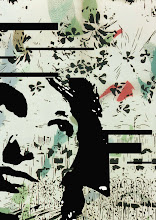Technological changes that are occurring in the world are impacting upon education. In times of change, curriculum alignment is necessary for effective learning to take place. Harper & Mould’s (2009) research reveals that a majority of schools are only modifying their assessments practices to match new requirements without altering teaching, learning and planning practices. ‘This inhibits students’ learning because they fail to see any direct correlation between classroom activities and assessment items’ (Harper & Moulds, 2009). I have given much thought to how I want to teach and what I want to generate in my students.
My teaching style will use the Technological, pedagogical and content knowledge (TPACK) framework, combining a scaffolding pedagogy approach to foster constructivist learning and convey content to different learners at different stages in Year 7 art. Within the TPACK framework interplays three forms of knowledge: Content, Pedagogy and Technology. The framework emphasizes that these elements do not exist in isolation, rather ‘it emphasizes the new kinds of knowledge that lie at the intersections between them.’ (Koehler & Mishra, 2009). I aim to achieve what this model promotes, ‘effective technology integration for pedagogy around specific subject matter requires developing a sensitivity to the dynamic, [transactional] relationship between all three components’ (Koehler & Mishra, 2009). I want to develop control over my teaching to link relations between all elements to integrate technology effectively and with relevance to the students and course.
I intend to use the teaching strategy of scaffolding with these Year 7 students as they make the transition from middle to senior school. Scaffolding is the ‘support provided to learners to enable a task to be done successfully and more independently by adjusting the assistance to fit the learner’s current level of performance’ (Krause et al, 2010). This is an effective method when teaching new skill sin visual arts as there are safety issues involved, as well as the need to now how to handle materials before you can create independent works. I have chosen ICT resources that have a scaffolding approach, such as the Artist’s Toolkit to help me in this learning experience on practical placement.
From my research into cognitive learning I believe constructivist principles thrive in visual arts classrooms and intend to mould my teaching practice to develop these principles in the classroom. Krause (2010) outlines how strategies I am implementing like group work, ICT interactive programs and scaffolding lead to constructivist learning. They:
1) encourage learner-centered experiences and activities
2) provide opportunities for learners to work together
3) assist novice learners to develop expertise.
I think this approach to fostering constructivist learning styles through certain teaching strategies is necessary for developing twenty-first century skills in an ever changing technological world and also promotes a collaborative environment of students with initiative. It also promotes intellectual and learning environment quality as well as significance, fulfilling the characteristics of effective pedagogy according to Every Chance to Learn (2007). Harper and Moulds (2009) research have shown that when teachers ‘employed a constructivist pedagogical approach and used technology to address subject are content, student understanding soared.’ These results have built confidence within myself to take this approach and see if it will benefit my Year 7 class.
References:
Harper, L. & Moulds, P. (2009). What implications to learning space and ICT have for the curriculum? MYSA, 9(1), 10-13.
Koehler, M. & Mishra, P. (2009). TPCK – Technological Pedagogical Knowledge. Retrieved from
Krause. K., Bochner. S., Duchesne. S., & McMaugh. A. (2010). Educational Psychology for Learning and Teaching. (3rd ed.). Victoria, Australia: Cengage Learning Australia.



